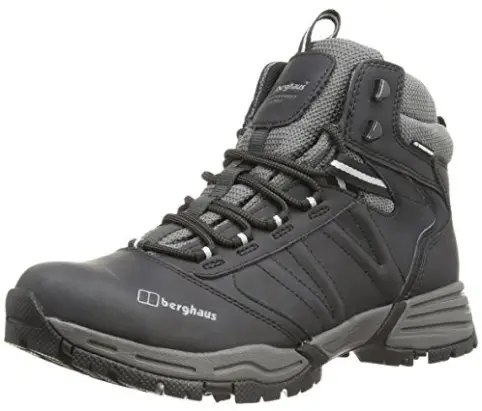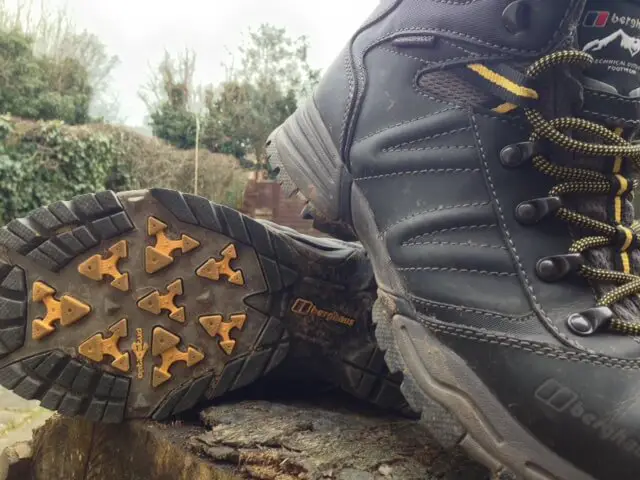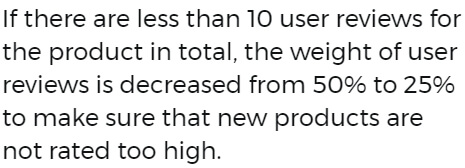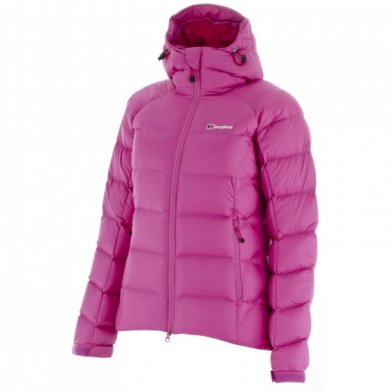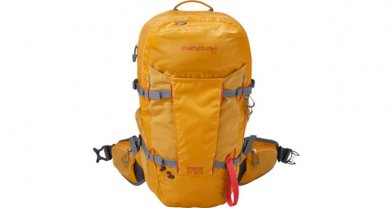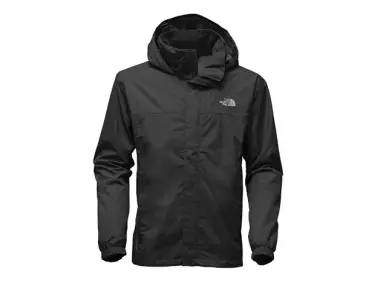Berghaus – Expeditor Waterproof Hiking Boots
Summary: For this one, Berghaus seems to be targeting the novice to intermediate outdoorsman really aggressively. Their choice to eschew expensive membranes from GORE or EVENT has resulted in a really functional and stylish boot at a pretty competitive price. So far, so good for this boot test with no problems to report on general mooching, dog-walking and short-sharp lowland hikes.
Editor's Pros & Cons
Pros
- Great value
- Good overall performance
Cons
- No branded waterproofing, though it hasn't been much of an issue for us
Review
All-rounders. Is that a complimentary phrase? I think so. Well, it's certainly meant as one when I use it here because these new leather hiking boots from Berghaus are a bit of a jack of all trades which have kept my feet comfy, warm and dry on everything from overnight searches to trips to the shops, and seemed suitable for everything.
This is specifically a test of the leather version - Berghaus also make a lighter, cheaper Suede boot which looks a bit more summery.
I wore them straight from the box on a weekend's mooching holiday in Bruges, where the wind was bitingly cold and the cobbles of the old city were unforgiving. The Expeditors are snug and cozy warm and their leather construction seems to insulate well against the chill.
I'd done them up too tight and I was wearing the wrong socks, so I fell victim to the new-shoe-rub during the course of the day, centred on two hotspots around my ankles. Alas I had to swap back to Teva's pumps where the temperature difference was noticeable and I could feel every cobble.
So it was tangible the difference that the Expeditors made over a low-tech shoe, but that's not to say that they are packing an abundance of technologies that makes them over-specced for most of the general public. The feel and flex of the boot is one build for comfort with a trail-shoe level of 'give' when you walk. But with the higher ankle and stiff heel-cup, they offer more support over rough stuff than a mere shoe and have coped admirably with gnarly tree roots and paths.
The sole of the Expeditor is Berghaus's Opti-stud design, which I really like for the sort of British lowland terrain. It grips really well on mud, wet banks and grass and feels like it bites in well on up- and down-hill gradients. The sole also seems to have shed mud quite well as it has flexed.
Berghaus say that there's a dual-density mid-sole doing the technical stuff of allowing the forefoot to flex and the midfoot to remain stiff, and a quick comparison with a bunch of other boots on test suggests that the Berghaus system is definitely at the 'flexy' end of boot soles. Which to my mind, for the everyman, is a good thing. These are not the type of boot you wear for manly mountaineering endeavors, or strap crampons to, so why go any stiffer?
The Expeditors' key sales point is the inclusion of Berghaus's own-brand waterproofing membrane. Choosing to use their own AQ branded membrane has kept the cost of these boots down, but to my mind hasn't compromised on their levels of waterproofing. Sure, it's still really cold out so the breathability tests probably haven't been comprehensive, but no amount of tromping through puddles, mud, streambeds and wet grass have caused wet socks yet, so the AQ membrane definitely gets our seal of approval.
The leather version of the boot comes in two flavours. The brown (pictured at the top of this review) and the grey (as per our test samples). The grey are jazzed up in a typical Berghaus fashion by the addition of wasp-butt laces and yellow webbing flashes. I like a nice pair of contemporary boots, so don't have a problem with the styling. However, more conservative buyers might question the number of material panels and stitching rows used on the Expeditors, which some people regard as weak points.
Despite my early lacing failure in Bruges, teamed with thicker socks and with a little more care spent when lacing them, the Expeditor boots have been really comfortable. The lacing system, which Berghaus have dubbed EHS (Ergonomic holding system) works pretty well at fine-tuning a fit, although the round laces do slide through the metal eyelets easily.
The tongue and ankle of the Expeditors feature lots of padding foam, and there's decent arch support in the insole which I like.
This is specifically a test of the leather version - Berghaus also make a lighter, cheaper Suede boot which looks a bit more summery.
I wore them straight from the box on a weekend's mooching holiday in Bruges, where the wind was bitingly cold and the cobbles of the old city were unforgiving. The Expeditors are snug and cozy warm and their leather construction seems to insulate well against the chill.
I'd done them up too tight and I was wearing the wrong socks, so I fell victim to the new-shoe-rub during the course of the day, centred on two hotspots around my ankles. Alas I had to swap back to Teva's pumps where the temperature difference was noticeable and I could feel every cobble.
So it was tangible the difference that the Expeditors made over a low-tech shoe, but that's not to say that they are packing an abundance of technologies that makes them over-specced for most of the general public. The feel and flex of the boot is one build for comfort with a trail-shoe level of 'give' when you walk. But with the higher ankle and stiff heel-cup, they offer more support over rough stuff than a mere shoe and have coped admirably with gnarly tree roots and paths.
The sole of the Expeditor is Berghaus's Opti-stud design, which I really like for the sort of British lowland terrain. It grips really well on mud, wet banks and grass and feels like it bites in well on up- and down-hill gradients. The sole also seems to have shed mud quite well as it has flexed.
Berghaus say that there's a dual-density mid-sole doing the technical stuff of allowing the forefoot to flex and the midfoot to remain stiff, and a quick comparison with a bunch of other boots on test suggests that the Berghaus system is definitely at the 'flexy' end of boot soles. Which to my mind, for the everyman, is a good thing. These are not the type of boot you wear for manly mountaineering endeavors, or strap crampons to, so why go any stiffer?
The Expeditors' key sales point is the inclusion of Berghaus's own-brand waterproofing membrane. Choosing to use their own AQ branded membrane has kept the cost of these boots down, but to my mind hasn't compromised on their levels of waterproofing. Sure, it's still really cold out so the breathability tests probably haven't been comprehensive, but no amount of tromping through puddles, mud, streambeds and wet grass have caused wet socks yet, so the AQ membrane definitely gets our seal of approval.
The leather version of the boot comes in two flavours. The brown (pictured at the top of this review) and the grey (as per our test samples). The grey are jazzed up in a typical Berghaus fashion by the addition of wasp-butt laces and yellow webbing flashes. I like a nice pair of contemporary boots, so don't have a problem with the styling. However, more conservative buyers might question the number of material panels and stitching rows used on the Expeditors, which some people regard as weak points.
Despite my early lacing failure in Bruges, teamed with thicker socks and with a little more care spent when lacing them, the Expeditor boots have been really comfortable. The lacing system, which Berghaus have dubbed EHS (Ergonomic holding system) works pretty well at fine-tuning a fit, although the round laces do slide through the metal eyelets easily.
The tongue and ankle of the Expeditors feature lots of padding foam, and there's decent arch support in the insole which I like.





